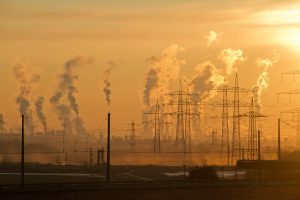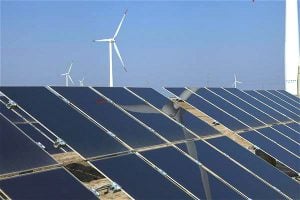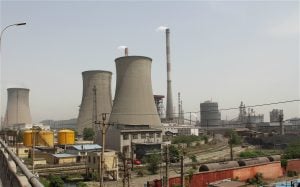In the wake of Donald Trump’s surprise victory in the US presidential election, and his refusal to recognise climate change, China’s new carbon market is attracting particular attention. China’s move is not just one of the most important outcomes of the US-China bilateral climate talks – it may be the most watched national climate change move since the Paris Agreement came into force.
In the short-term, experts are not expecting China’s national carbon market to be perfect. They say it will take several years of growth before it delivers emissions reductions, and that the most urgent task is to put the market mechanism in place quickly so that its operation can be studied and improved.
Unprecedented scale
The new market has received significant attention due to its nationwide scale and unprecedented size, which is expected to be in the range of 3-5 billion tonnes of carbon allowances per year initially. This is much larger than the EU-ETS scheme, which is currently the largest carbon market, with two billion tonnes of allowances. In 2015, 80% of all carbon trading worldwide took place on the EU market. The new Chinese market will change that.
According to a document issued by the National Development and Reform Commission (NDRC) in January, the market will at first be restricted to firms in eight sectors: petrochemicals, chemicals, building materials, steel, ferrous metals, paper-making, power-generation and aviation. Any firm in these sectors using more than 10,000 tonnes of standard coal equivalent (TCE) of energy annually must participate in the market. Over 7,000 such firms have been identified, accounting for about half of all China’s emissions.
Jiang Zhaoli, deputy head of the NDRC’s climate change department, revealed that allocation of carbon allowances will be completed in the first half of 2017, after which the climate market will be launched.
Jiang also said that launch prices may be set as the average of the prices on China’s seven trial carbon markets (about 30 yuan per tonne), which will mean between 1.2 and 8 billion yuan (US$0.17-1.16 billion) of over-the-counter trading annually. But after 2020, more varied products, such as carbon futures, will be introduced, with market trading expected to expand to between 60 and 400 billion yuan (US$8.7-58 billion) a year. Trading will also be expanded to other sectors, and to firms using 5,000 TCE per year.
Learning as you go
China currently has seven regional carbon trading trials that are spread across the developed eastern coast and less affluent inland areas. By 2015, these covered 2,000 firms, with annual carbon allowances totalling 120 million tonnes.
Unlike the EU market, which was in preparation for six years, China’s trial carbon markets launched only two years after instructions from the NDRC. At the end of 2013, trial markets went into operation in Beijing, Shanghai, Guangzhou, Shenzhen and Tianjin, with Wuhan and Chongqing following several months later. This means even the longest-running of the trial markets has only three years’ experience.
The trials have revealed significant differences in performance across regions. One aspect of this is the carbon price. Mei Dewen, head of the Beijing Environment Exchange, said that prices are only stable in Beijing – at about 50 yuan per tonne – whereas in Guangzhou and Wuhan prices are as low as 10-20 yuan.
There are also important differences in the participation of firms in the carbon markets, which is demonstrated in the varying levels of market development. Lin Jiaqiao, of the Rock Environment and Energy Institute, thinks that in Chongqing and Hubei, in particular, there has been insufficient training. This has resulted in companies not fully understanding carbon trading, and providing inaccurate emissions data. This compares with Shanghai, where market design and company training have been very good – something that other markets could learn from.
As for the nationwide market, which will be orders of magnitude larger than the trials, Jiang pointed out that the trials have shown markets are more effective when the rule of law is stronger.
Currently, the rules applicable to carbon markets are the NDRC’s 2014 Temporary Measures for Management of National Carbon Trading Markets. However, as the NDRC’s departmental level rules are weak, it is expected that State Council regulations, the Regulations for Management of National Carbon Trading Markets, which are currently being drafted, will have more force.
But some experts say it is possible to learn as you go, gradually improving the market rules as required. Qian Guoqiang, strategy director for carbon trading consultancy SinoCarbon, said that the first three years of a national carbon market should be regarded as a trial period, and there is no need to be overly worried about problems arising during this time.
Qian told chinadialogue: “You don’t just throw a child in the water and tell him how to swim; he won’t learn. When the market gets started it’ll identify problems, then it’ll adjust and improve. There are lots of problems you won’t find until it’s launched – you could discuss it for ever, but that’s no real help.”
Allocation of allowances
The calculation and allocation of carbon allowances is key to maintaining a reasonable carbon price, and perhaps the most important part of a carbon market – as shown by the EU carbon market, which has seen a surplus of allowances and plummeting prices. Qian Guoqiang says the EU used legislation to set allowances for years into the future, making ongoing adjustments difficult. China will adjust allowances annually based on output, leaving room for improvements to be made.
Specifically, China is to allocate allowances dynamically, based on sectoral baselines. The sectoral baseline is the carbon intensity a specific sector must reach if it is to hit its emissions targets. In practice, baselines will be established on the performance of a sample of leading firms in each sector. Companies can multiply their own output by baseline emissions intensity for the year, as published by the market managers, and estimate their allowance for that year.
Qian told chinadialogue that China’s national carbon market has learned from the EU market in the design of its market stability reserve (MSR). The reserve maintains liquidity in the market by buying back allowances when there is a surplus and selling them during a shortage. However, the specifics of how this will work have not been published yet.
Qian is more worried about acquiring national emissions data than he is about allocation of allowances. The success of the sectoral baseline method depends on getting full and accurate data. Gathering that data takes time, and it will be around 2020 before it is possible to use the method nationwide.
Gradual impact
One problem that could be faced in early trading is too low a carbon price that will fail to adequately incentivise emissions reductions. Jiang Zhaoli pointed out that early allowances will be generous so that companies have time to adapt, and that the initial carbon price will be about 30 yuan per tonne. That is lower than the current price on the Beijing and Shenzhen exchanges, of 40-50 yuan.
Mei Dewen, head of the Beijing Environment Exchange, said that if allowances are too generous, companies will have no reason to trade, and low carbon prices will hamper the healthy development of the market. “The role of carbon markets is to use pricing mechanisms to bring about trading of emissions allowances, a scarce product. If prices are too low, there won’t be any deals.”
Jiang Zhaoli told chinadialogue that companies won’t feel any real pressure to cut emissions until the carbon price hits 200-300 yuan, and he doesn’t expect that to happen until after 2020. That means the market won’t contribute to emissions reduction until later than 2020.
There are also concerns that the two-track management system for the markets, which will see roles for both central and local government, could lead to local protectionism: central government will determine how companies’ emissions are calculated and the basic principles for the allocation of allowances, and supervise third party auditors and the trading platforms – but actual allocations will be handed out by local government.
It is also worth noting that China’s carbon market aims to achieve a drop in carbon intensity, rather than absolute carbon emissions. This will ensure China’s firms are willing to participate in the market, but it also gives rise to worries about how much actual impact it will have on carbon emissions.
However, Jiang Zhaoli argues that carbon markets are just one of many ways to reduce emissions. Ideally, the carbon market will work in concert with energy, economic, and environmental and climate policy.
He added that China’s carbon markets currently play only a limited role in promoting a low carbon energy transition, but will, at least, encourage firms to catch up with the best performers in their sector. And as the bulk of China’s emissions will be covered by the national market, “Carbon markets will make a major contribution to China’s commitments of reaching a carbon peak around 2030 and reducing carbon intensity by 60%-65% the same year.”







